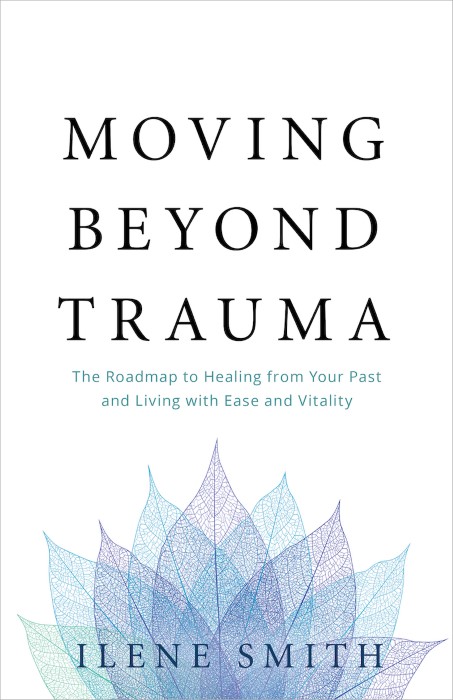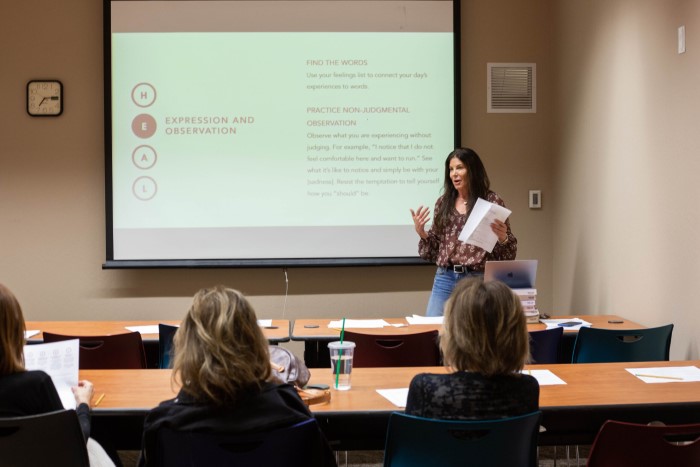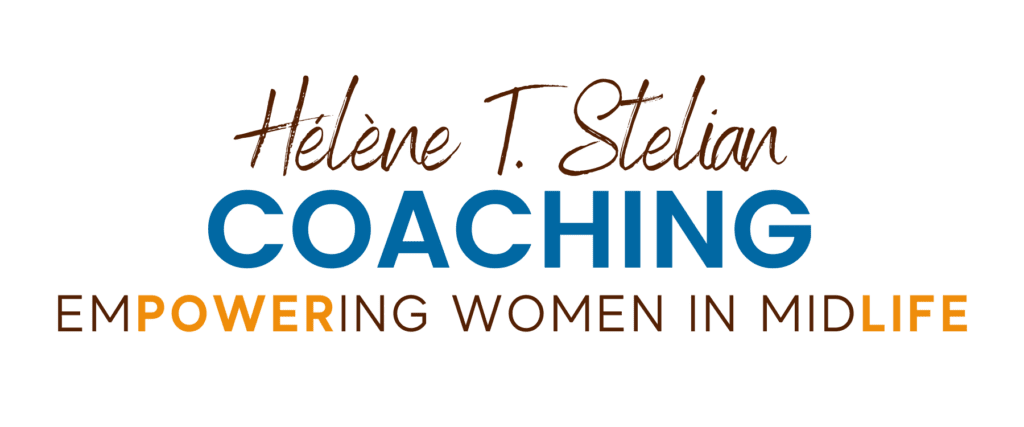 You work with people who have gone through trauma. How do you define trauma and how does one know if they’ve been through a traumatic experience?
You work with people who have gone through trauma. How do you define trauma and how does one know if they’ve been through a traumatic experience?
When we think about trauma in our lives, we often refer to an event: a burglary, the unexpected death of a parent, an accident that left us injured. But Peter Levine, Ph.D., the founder of Somatic Experiencing, has a different perspective. He maintains that trauma is not an event, but the energy that gets locked in your body around real or perceived threat.
The extent to which a person experiences trauma is directly related to their ability to restore a sense of safety in the aftermath of the threatening event. If they’re unable to effectively do that, their nervous system gets stuck in the survival states of fight, flight, or freeze.
These survival states are only useful for acute states of threat. When an individual gets stuck in a trauma reaction because they cannot restore their sense of safety, the individual will continually sense danger when danger is not present, or completely shut down and lose capacity to live in the present. What may be considered a traumatic experience for one person may not be traumatic for another. In my new book, Moving Beyond Trauma: The Roadmap to Healing from Your Past and Living with Ease and Vitality, I have a trauma sensitivity assessment. The intention of the assessment is to help the reader see to what extent their past experiences are impacting their life today. I believe this is one of the best ways to understand if you have trauma locked in your body.

You say talk therapy does not work to resolve trauma. Why is that?
Talk therapy is extremely helpful in giving us insight into our problems and helping us cultivate an awareness of how our past traumatic experiences impact present behaviors. However, that intellectual understanding is not how the issues at hand get fully resolved. In order to heal emotionally, spiritually, and physically, we need to invite the body into the process. Why? Think about this: if trauma results from energy which gets locked in the body when we experience real or perceived threat, then shouldn’t our pain get resolved – or unlocked – through the body as well?
When I begin working with clients, the first thing I do is invite them to be curious about what is happening in the here and now. By doing so, I move a client out of their head and orient them in the present moment and into their body. Cultivating an awareness of the present moment is the first step in moving out of a cognitive process and into a full physical experience.
You use Somatic Experiencing in your healing work with clients. Tell us more about this modality and why it’s so effective.
When trauma strikes, the nervous system loses its ability to maintain a state of balance. The trapped energy from the traumatic experience causes the nervous system to rush into a state of fight, flight, or freeze. Somatic Experiencing works to bring the nervous system back online by helping the individual restore their sense of safety. This can only happen when the body has a “biological completion” and the trauma energy has the opportunity to reintegrate back into the body.
Somatic Experiencing uses a clinical map to access the physiological states of survival known as fight, flight, and freeze and helps release the self-protective and defensive responses we hold in our body. When an event happens too fast and we do not have the time or ability for self-protection or defense, this survival energy gets stuck in our body as an incomplete biological reaction. This stuck energy is what causes trauma symptoms. In this way, humans are no different than animals in the wild. When an animal has been under threat, they will reset their nervous system by shaking off the trauma. This shaking is a “biological completion” for the animal that allows its nervous system to restore its sense of well-being.
Often in talk therapy, an individual continues to relive the story of the past experience. And while it is important for the story to be heard, the retelling of it alone does not enable the body to create a new and more empowered relationship with the past experience. Somatic Experiencing is different. It includes talking, but the talking is used to track body sensation and meaning attached to experiences, rather than bring the individual back into the event of the trauma. When we bring the body into the therapy process and facilitate a way for the individual to physically move through the experience with a sense of safety, the relationship to the experience changes and the stuck energy will discharge.

How do you work with clients?
I have what I call a concierge practice. My clients work with me face to face one day a month (or 2 half days). In between sessions, my clients have access to me by phone.
The reason I work in this structure is two-fold. I like having extended time with my clients so that we are not rushing. We tend to get a lot of good work done and it is an opportunity to help settle the nervous system. I have worked hourly with clients and sometimes it will take an hour to just move somebody out of anxiety. The second reason I like this format is that when clients reach out to me in between sessions, I can actually begin to understand how their nervous system is functioning in the real world. This allows me to problem solve and find the right interventions in-vivo.
I have also developed a series of workshops and lectures to be able to reach a larger audience.
Can you give us an example of a client you’ve helped move beyond trauma?
I work a lot with eating disordered patients and many of them see the path to recovery but still find it difficult to follow through on their action plans. When we heal the unresolved trauma with these clients, the nervous system restores its sense of safety and the maladaptive behaviors begin to dissipate. These clients gain mastery over their nervous systems to bypass triggers and fully implement the recovery action plan.
A specific example is a client who was recovering from breast cancer. When this client came to me, she was suffering from depression. Several factors were making it difficult for her to recover emotionally from her experience. The trauma was less about the diagnosis and more about her treatment and how the doctors managed her case. She was left feeling unsafe in her body and was experiencing chronic pain. Through our treatment we restored her sense of safety in her body. Not surprisingly, she began to manage her pain better and also started connecting with friends again.

What resources, in addition to your book, do you recommend?
A great resource for information is the Somatic Experiencing Institute: www.traumahealing.org. You can also find a Somatic Experiencing Practitioner in your area through the website.
I also recommend any book by Peter Levine the founder of Somatic Experiencing. In an Unspoken Voice: How the Body Releases Trauma and Restores Goodness is a great one to start with.
Connect with Ilene Smith:
Contact form: https://ilenesmith.com/contact/
Book: Moving Beyond Trauma: The Roadmap to Healing from Your Past and Living with Ease and Vitality
Website: http://ilenesmith.com/.
Social Media Links:
https://www.instagram.com/ilenesmithhealing/
https://www.facebook.com/SomastasisLLC/
Ilene Smith is the author of Moving Beyond Trauma: The Roadmap to Healing from Your Past and Living with Ease and Vitality. She is a certified professional coach and Somatic Experiencing practitioner who is passionate about helping others explore life with curiosity and exuberance. Her research into Somatic Experiencing and eating disorders has contributed to the importance of Somatic Experiencing and body-based therapies in recovery. Ilene has also worked extensively with patients suffering from addiction. With master’s degrees in exercise physiology and mental health counseling, Ilene blends talking, touch work, and movement to create synergy between a client’s body and mind. In addition to her private practice, Ilene has developed a series of trauma healing workshops and lectures, which she hosts worldwide. She lives in Arizona.






Yes, trauma is energy locked in your body. “The body keeps score,” as Bessel Van Der Kolk writes about in his book by this title. Your book sounds like an important contribution! Yeah, talk therapy can be useful but does not resolve trauma, as I’ve written about in my memoir called I’m So Glad You’re Here (She Writes Press, May 26, 2020) in a chapter called “Healing from Trauma: A Participant Observer’s Report.” I’d be interested in your reading that chapter especially and the opening that describes the trauma I experienced, age 18, that
took a long time to surface and then demanded to be heard and freed! Somatic Experiencing sounds like an alternative to EMDR therapy that I did and worked. I’m so grateful. My trauma therapist actually trained with Bessel Van Der Kolk, which was fortunate for me. But I think what you are doing is not just an alternative–sounds like this treatment works well with different kinds of traumas. Good to have both this resources–and most important to help people understand the mind-body connection.